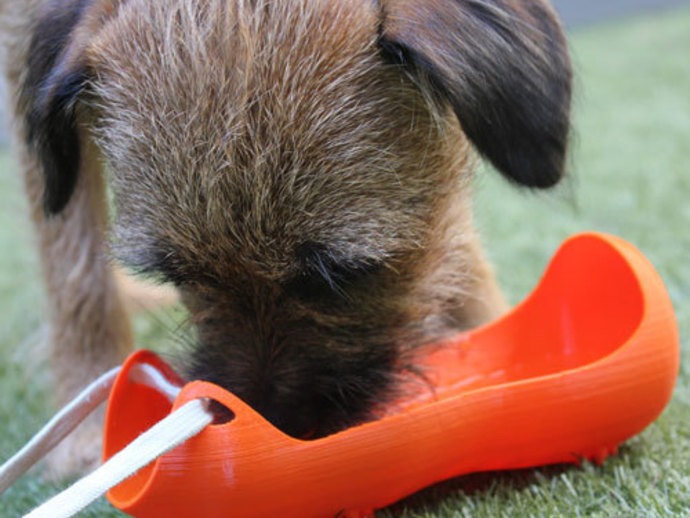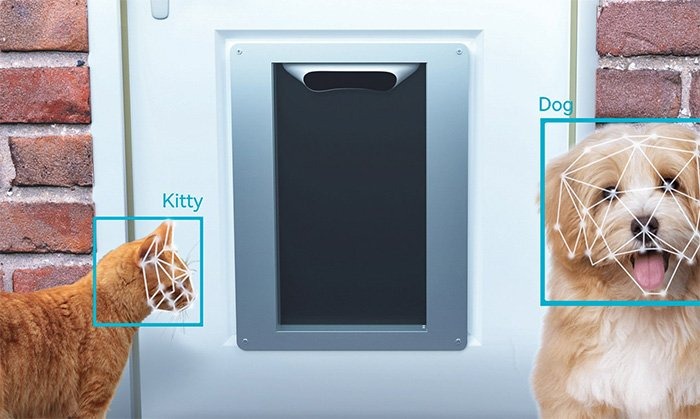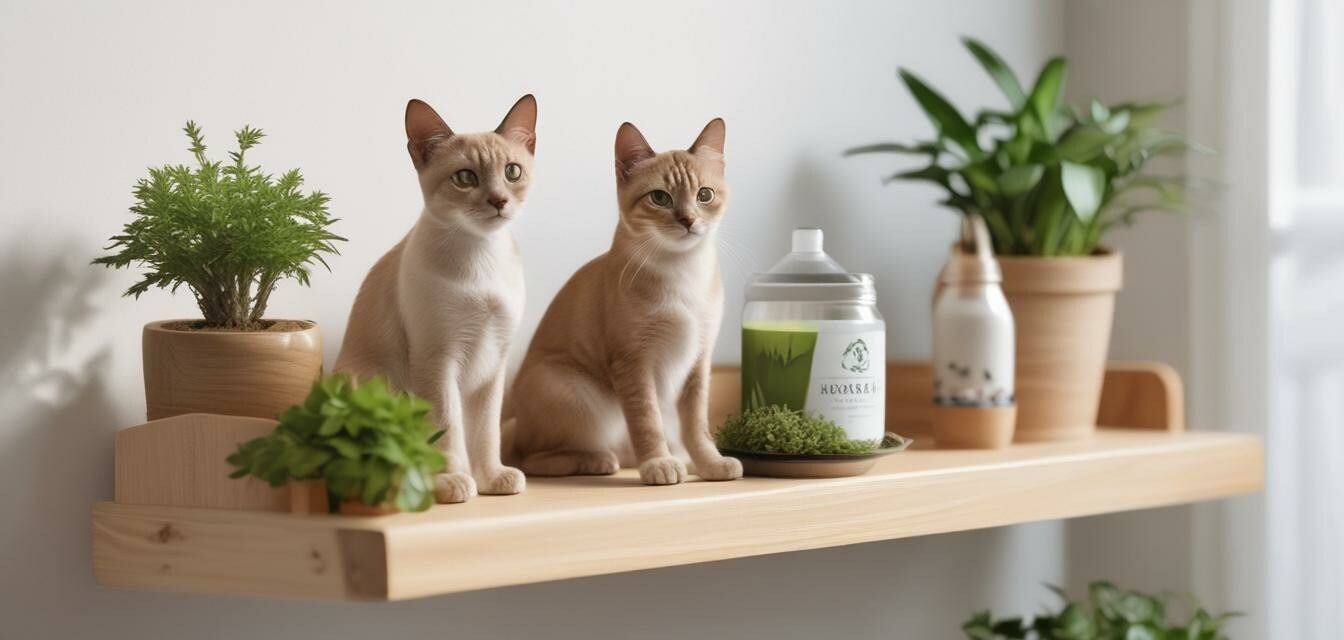
The future of 3D-printed pet accessories: food bowls, toys, prosthetics.
Exploring the future of 3D-printed pet accessories, this article delves into innovative solutions for food bowls, toys, and prosthetics, highlighting customization, affordability, sustainability, and life-changing veterinary applications. From tailored feeding tools and interactive toys to advanced prosthetics restoring mobility, 3D printing promises to transform pet care, enhance animal welfare, and empower owners with accessible, personalized, and technologically advanced solutions.
🐶 Pet Star
48 min read · 2, Oct 2025

Introduction
The world of pet care has been evolving rapidly, fueled by technological innovation and growing consumer demand for customized, sustainable, and cost-effective solutions. One of the most fascinating technological shifts in this space is the rise of 3D printing. While once limited to industrial prototyping, 3D printing has now permeated everyday life, extending its influence into healthcare, fashion, and even pet care. From food bowls tailored to a pet’s unique needs, to toys designed for durability and enrichment, and even prosthetics offering mobility to disabled pets, 3D printing is poised to revolutionize how humans care for their animal companions.
This article explores the future of 3D-printed pet accessories, focusing on the practical applications, benefits, challenges, and future outlook of this technology in the pet industry.
1. 3D Printing in Pet Care: A New Era
3D printing, also known as additive manufacturing, involves creating objects layer by layer from digital designs. For pet owners, this technology means they are no longer limited to mass-produced accessories. Instead, they can design or download digital blueprints of pet products, adjust them according to their pet’s size or preferences, and print them at home or via online services.
This democratization of production empowers owners to create highly personalized items, often at lower costs, while reducing waste compared to traditional manufacturing.
2. 3D-Printed Food Bowls
Customization and Functionality
One of the simplest yet impactful applications of 3D printing in pet care is the food and water bowl. Unlike generic store-bought bowls, 3D-printed bowls can be tailored to an animal’s breed, height, or dietary requirements. For example:
- Elevated bowls for large dogs to improve digestion.
- Shallow bowls for flat-faced breeds like pugs and Persian cats to prevent discomfort.
- Puzzle feeder bowls with built-in ridges to slow down fast eaters.
Sustainability
Pet owners can also choose biodegradable and food-safe filaments, such as PLA (polylactic acid), made from renewable resources like corn starch. This reduces the environmental footprint of pet care.
Health Considerations
The challenge lies in ensuring food safety standards are met. Not all 3D printing filaments are safe for food contact, and improperly printed bowls may harbor bacteria in microscopic grooves. In the future, antimicrobial filaments and smoother finishing techniques could solve these issues.
3. 3D-Printed Toys
Endless Creativity
Pets thrive on mental stimulation, and 3D printing allows for unlimited toy designs, ranging from fetch balls to intricate puzzle toys. Owners can download open-source toy files, modify them, or create new designs tailored to their pet’s play habits.
Cost-Effective Replacement
Toys wear out quickly, especially with heavy chewers. 3D printing allows owners to print replacements on demand, saving money and reducing waste.
Safety and Durability
Safety is a major concern in toy design. Future developments may include flexible, chew-resistant filaments or even biodegradable ones that break down harmlessly if ingested in small amounts.
Enrichment Potential
Interactive toys that integrate sensors or sound elements could also be paired with 3D-printed structures, enhancing enrichment opportunities for pets. Imagine a smart 3D-printed puzzle toy that dispenses treats only when solved correctly.
4. 3D-Printed Prosthetics and Medical Devices
Life-Changing Solutions
Perhaps the most groundbreaking application of 3D printing in pet care lies in prosthetics and orthotics. Animals born with deformities or injured in accidents often face mobility challenges. Traditionally, prosthetics for pets are expensive and time-consuming to make. 3D printing offers a faster, cheaper, and more customizable solution.
Success Stories
- A duck named Buttercup became famous for receiving a 3D-printed foot that allowed him to walk normally.
- Dogs with missing legs have regained mobility with lightweight, custom-fitted prosthetics.
- Turtles with cracked shells have benefited from 3D-printed shell supports.
Veterinary Revolution
Beyond prosthetics, 3D printing is being used for custom surgical tools, dental implants, and anatomical models for veterinary training. This makes procedures more precise and outcomes more successful.
Future Directions
As materials evolve, prosthetics may incorporate flexible joints, smart sensors, and bio-compatible coatings to improve comfort and durability. In time, 3D printing could even contribute to bio-printed tissues and organs for pets.
5. Benefits of 3D Printing for Pet Accessories
- Customization: Tailored designs for specific pets’ size, breed, and health needs.
- Affordability: Reduces costs compared to custom-made traditional products.
- Accessibility: Pet owners in remote areas can download and print designs at home.
- Sustainability: Reduced plastic waste and the use of biodegradable materials.
- Speed: Quick turnaround for replacements or medical devices.
- Innovation: Continuous creativity through open-source communities.
6. Challenges and Concerns
Despite its promise, there are hurdles that must be addressed:
- Material Safety: Not all filaments are non-toxic or food-safe. Regulations for pet products are less defined than for human items.
- Durability: Some prints may not withstand chewing, scratching, or long-term use.
- Access and Knowledge: Not all pet owners have 3D printers or design skills.
- Veterinary Oversight: Medical devices must be designed under expert guidance to avoid harm.
- Environmental Impact: While PLA is biodegradable, other filaments are not, raising sustainability questions.
7. The Future Outlook
The future of 3D-printed pet accessories is incredibly promising. As technology advances:
- Food-safe antimicrobial materials will become standard.
- Online libraries of customizable pet products will grow, allowing easy downloads.
- Veterinary collaborations will enhance medical-grade prosthetics and implants.
- Smart accessories integrating sensors, trackers, or IoT features may emerge.
- Community-driven design platforms will allow pet owners worldwide to share innovations.
We may soon see a world where every pet, regardless of location or owner’s income, has access to affordable, personalized care products through 3D printing.
The future of 3D-printed pet accessories, ranging from everyday items like food bowls and toys to life-changing prosthetics, is shaping up to be one of the most fascinating intersections of technology, customization, and animal care, and its impact on pets and their owners is only beginning to be understood as this technology becomes more accessible and widespread; 3D printing, also called additive manufacturing, allows products to be built layer by layer from digital designs, giving pet owners and veterinarians the ability to create customized items that fit the exact needs of an individual animal rather than relying on mass-produced products, which often fail to account for differences in breed, size, health, or behavior, and this shift has the potential to democratize pet care by putting creative power directly into the hands of owners while also reducing costs and environmental impact. Consider food bowls as a starting point: while traditionally these come in limited shapes and sizes, 3D printing makes it possible to create bowls that are tailored to the animal’s unique requirements—elevated bowls for large dogs to aid digestion and reduce joint strain, shallow bowls for flat-faced breeds such as pugs or Persian cats to prevent discomfort, or puzzle feeder bowls designed with intricate ridges to slow down fast eaters and prevent bloating; furthermore, these bowls can be produced using sustainable, biodegradable, and even antimicrobial materials that enhance safety and hygiene, making them both eco-friendly and pet-friendly, though challenges like ensuring smooth finishes to avoid bacterial buildup and verifying the use of food-safe filaments remain. Moving on to toys, the possibilities are almost endless, as 3D printing allows owners to design or download blueprints for enrichment tools that match their pet’s size, preferences, and chewing strength, whether it is a durable fetch ball, a treat-dispensing puzzle, or even a toy with interactive features; because toys often wear out quickly, particularly for strong chewers, 3D printing makes it simple to print affordable replacements on demand, drastically cutting down on waste and cost, and in the future, we may see chew-resistant flexible filaments or biodegradable designs that harmlessly break down if ingested in small quantities, which would address current safety concerns. The most revolutionary application, however, is in the field of prosthetics and medical devices, where 3D printing has already changed lives—animals born with deformities, injured in accidents, or struggling with mobility issues can receive prosthetic limbs, orthotic supports, or even shell repairs in the case of turtles, all tailored precisely to their anatomy at a fraction of the cost and time of traditional methods; famous cases such as Buttercup the duck, who received a 3D-printed foot, or dogs regaining the ability to walk with lightweight custom prosthetics highlight how this technology not only improves quality of life but also gives hope to animals who might otherwise face euthanasia or lifelong immobility, and veterinarians are increasingly using 3D printing for custom surgical tools, dental implants, and anatomical models that allow for more precise surgeries and better training, which ultimately leads to better outcomes. The benefits of 3D printing for pets are clear: unparalleled customization, affordability compared to traditional custom solutions, sustainability through reduced waste and renewable materials, accessibility even for remote pet owners who can download designs online, speed in producing replacements or emergency devices, and innovation driven by open-source communities where owners and designers share their creations freely; yet, it is also important to recognize the challenges that must be addressed before the technology becomes mainstream, such as ensuring strict safety standards for materials used in food bowls and toys, guaranteeing durability to withstand chewing, scratching, and daily wear, making the technology accessible to less tech-savvy pet owners who may lack design skills or 3D printers, and ensuring veterinary oversight for medical devices so that amateur attempts do not unintentionally harm pets. Moreover, while biodegradable filaments like PLA exist, not all materials used in 3D printing are eco-friendly, so further development in sustainable filaments is necessary to minimize long-term environmental impact. Looking toward the future, the outlook is highly promising: advances in antimicrobial, food-safe, and chew-resistant materials will solve current limitations, while online libraries of customizable pet product blueprints will continue to grow, making it simple for anyone to print accessories tailored to their animal’s specific needs; veterinary collaborations will enhance the sophistication of 3D-printed prosthetics, incorporating flexible joints, smart sensors, and bio-compatible coatings for comfort and performance; smart 3D-printed accessories integrated with IoT devices, such as bowls that monitor eating patterns or toys that interact intelligently with pets, may emerge as mainstream tools in pet care; and community-driven design platforms will ensure that ideas and innovations spread globally, making the technology not just a privilege for wealthy pet owners but a universally accessible solution that improves animal welfare across the board. In summary, 3D printing has the potential to revolutionize pet care by offering individualized, sustainable, and affordable solutions, transforming everyday items like bowls and toys into personalized tools that promote health and enrichment, while also offering groundbreaking medical devices that restore mobility and save lives; although challenges in safety, durability, and accessibility remain, the rapid pace of material innovation and the collaborative spirit of the 3D printing community suggest that in the near future, owning a 3D printer might become as commonplace for pet households as owning a smartphone, unlocking a world where every pet, regardless of breed, size, or condition, can enjoy products made specifically for them, marking a new era of compassionate, technology-driven animal care.
The future of 3D-printed pet accessories, including food bowls, toys, and prosthetics, represents a transformative intersection of technology, customization, and animal care that promises to revolutionize the way pet owners interact with, care for, and support their animals, offering unprecedented opportunities for personalization, innovation, and accessibility, as 3D printing, or additive manufacturing, allows objects to be created layer by layer directly from digital designs, enabling pet owners and veterinarians alike to move beyond the limitations of mass-produced items that often fail to accommodate the unique needs of individual animals, and this capability is particularly significant given the growing attention to pet welfare and the desire for more sustainable, affordable, and functional products, starting with one of the most basic but essential accessories, the food bowl, which can now be precisely tailored to an animal’s breed, size, posture, or dietary requirements, allowing elevated bowls for large dogs that reduce joint strain and improve digestion, shallow bowls for brachycephalic breeds such as pugs or Persian cats to minimize feeding discomfort, and puzzle feeder designs that encourage slower eating while providing mental stimulation, while these bowls can be made from food-safe, biodegradable, and even antimicrobial filaments such as PLA, derived from renewable resources like corn starch, significantly reducing environmental impact compared to conventional plastic products, although careful consideration of finishing techniques is necessary to prevent bacterial growth in microscopic grooves, highlighting the ongoing need for research and development in safe 3D-printing materials; 3D printing also introduces revolutionary possibilities in the design of pet toys, allowing owners to download, modify, or create entirely new blueprints that match their pet’s size, chewing strength, and play behavior, ranging from simple fetch balls and chew-resistant rings to complex treat-dispensing puzzle toys that engage the pet mentally and physically, with the added benefit of enabling on-demand replacement of worn or broken toys, thereby reducing waste and cost, and future innovations are likely to include chew-resistant and flexible filaments as well as biodegradable options that safely break down if ingested, while the potential integration of sensors or IoT components could create interactive toys that monitor behavior, dispense rewards, or adapt challenges based on the animal’s activity level, further enhancing enrichment and engagement; however, perhaps the most impactful application of 3D printing in the pet industry is in the field of prosthetics and medical devices, where the technology has already provided life-changing solutions for animals with mobility issues due to congenital defects, accidents, or illness, allowing the creation of lightweight, customized prosthetic limbs, orthotic supports, and even shell repairs for turtles and other exotic pets, exemplified by widely reported cases such as Buttercup the duck, who received a 3D-printed foot that restored his mobility, or dogs that regained the ability to walk comfortably with custom-fitted limbs, while veterinarians are increasingly employing 3D-printed anatomical models, surgical tools, and dental implants to improve precision in surgeries, enhance training outcomes, and ultimately provide better healthcare for pets, and future developments may incorporate bio-compatible coatings, flexible joints, and sensor integration to improve comfort, function, and monitoring, with the potential for even bio-printed tissues or organs in the long term, which would mark a significant milestone in veterinary care; the advantages of 3D printing for pet accessories are extensive, including unmatched customization, affordability compared to traditional bespoke items, reduced environmental footprint due to the ability to produce only what is needed using biodegradable materials, accessibility for pet owners in remote areas who can download digital designs and print at home or via online services, rapid production timelines for replacements or emergency devices, and the promotion of innovation through open-source communities where designs can be shared, modified, and improved collaboratively, yet these benefits are accompanied by challenges that must be addressed before mainstream adoption can occur, such as ensuring that filaments are truly non-toxic, food-safe, and durable enough to withstand chewing, scratching, and everyday wear, as well as overcoming barriers related to technical expertise, printer availability, and the need for veterinary supervision when creating prosthetics or medical devices to avoid harm, while also considering that not all 3D-printing materials are biodegradable, which raises sustainability concerns that require ongoing material innovation; looking ahead, the trajectory of 3D-printed pet accessories is exceptionally promising, with anticipated advancements including widespread availability of antimicrobial and food-safe filaments, expanding online libraries of customizable pet products for easy download and printing, enhanced veterinary collaboration for precision prosthetics, orthotics, and surgical aids, the integration of smart technology into accessories for monitoring health, behavior, or nutrition, and global community-driven design platforms that encourage innovation, accessibility, and knowledge sharing, allowing pet owners of varying technical skills and financial means to benefit from personalized pet care solutions, ultimately fostering a world where every animal, regardless of breed, size, or health condition, can receive products tailored specifically to them, ranging from everyday functional items like food bowls and toys to life-altering medical devices, and in doing so, improving not only the welfare of individual pets but also promoting sustainability, cost-efficiency, and creative engagement within the broader pet-care ecosystem, indicating that in the near future, 3D printing could become as commonplace in households with pets as smartphones or computers are today, transforming the landscape of pet care and establishing a new standard for compassionate, technology-driven animal welfare that merges innovation, personalization, and practicality to enhance the quality of life for animals and deepen the human-animal bond in ways that were previously unimaginable.
Conclusion
3D printing is set to transform the pet care industry by offering customization, affordability, sustainability, and innovation. From personalized food bowls to interactive toys and life-changing prosthetics, the technology brings hope for healthier, happier pets. While safety, regulation, and material concerns remain challenges, advancements in bio-safe materials and widespread access to 3D printing will likely resolve these issues.
In the future, 3D printing could become as common in pet households as smartphones are today—empowering owners to create everything their pets need at the push of a button.
Q&A Section
Q1: What are the main benefits of 3D-printed pet accessories?
Ans: Customization, affordability, sustainability, quick replacements, and innovative design possibilities.
Q2: Are 3D-printed food bowls safe for pets?
Ans: They can be safe if made with food-grade, antimicrobial materials, but owners must ensure proper finishing to prevent bacteria buildup.
Q3: Can 3D-printed toys withstand heavy chewing?
Ans: Current filaments may not be fully chew-proof, but new durable and flexible materials are being developed for safer, longer-lasting toys.
Q4: How does 3D printing help pets with disabilities?
Ans: It enables affordable, customized prosthetics and orthotic devices, improving mobility and quality of life for injured or disabled animals.
Q5: What challenges exist in adopting 3D printing for pets?
Ans: Material safety concerns, durability, lack of regulations, limited owner knowledge, and environmental impacts from non-biodegradable plastics.
Similar Articles
Find more relatable content in similar Articles

How Pets Strengthen Family Bonds...
Pets are more than just compan.. Read More

Smart Homes for Pets: Automated Feeders, Doors, and Mo..
As smart home technology advan.. Read More

Sustainable Pet Products: What to Look for in 2025...
As sustainability becomes a ce.. Read More

How Climate Change Affects Wild and Domestic Animals...
Climate change is dramatically.. Read More
Explore Other Categories
© 2024 Copyrights by rPets. All Rights Reserved.